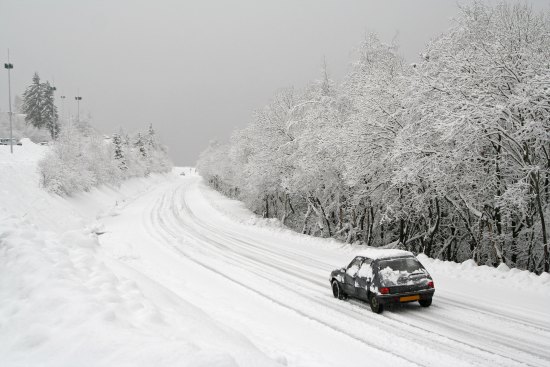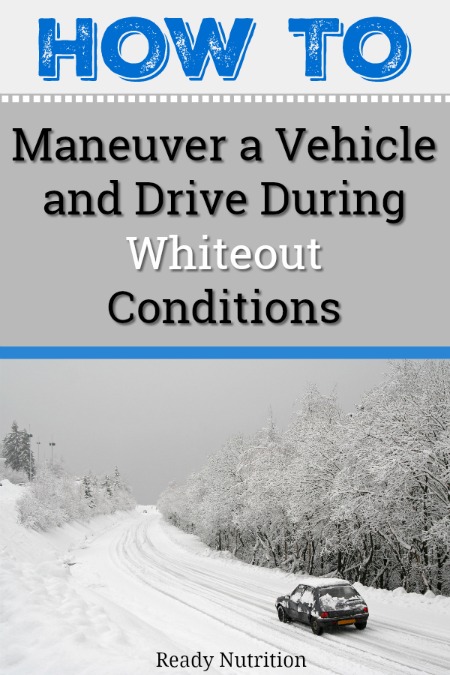
For those of you who are unaware of what it is like driving in whiteout conditions, this is a good video that demonstrates just how dangerous it can be.
If you do not think you can drive further, pull off to the safest available portion of the shoulder or off the road, hunker down, and wait out the storm. Make sure you have some emergency supplies to survive being stranded in your vehicle.
One of the best things about living in the area that I do is that open stretches of empty road are just that: hardly any traffic at all. This Whiteout caught a lot of people off guard, and they were forced into it to make it home from work (as it began about 4 pm and lasted a few hours). Whiteouts are caused when the snowfall’s effects are exacerbated and strengthened by a strong wind. It is not necessarily a “blizzard,” but the more snowfall the worse it will be when the winds pick up. You cannot see even half a vehicle length in front of you.
How To Drive in a Whiteout
Now, let’s begin. This technique can be very dangerous if you do not employ it correctly. For naysayers and law-and-order worshippers, keep in mind: there are such things as mitigating circumstances. If you’re suffering from some kind of injury with no telephone and it’s a life-or-death situation, forget about Officer (Un)Friendly and go for the win…. succeed in your travel.
One of the problems with Whiteouts is with the headlights themselves. The lights reflect off the snowflakes and blind the driver. High-beams are out. Low-beams can also be “out,” and now for the punch line: You can drive through a Whiteout in a controlled manner better without the headlights than with them.
I can see smirks and skeptics gathering the straw now, but before you burn me, hear me out. Try this under normal snowfall conditions. Try it in your neighborhood, or in your driveway…if you are away from the “city glow” at night. Turn off the headlights and look around. You see? You can see. There is enough ambient light in a snowfall to allow you to see…if you follow the key rule:
You must give your eyes time to adjust to the low levels of light.
This takes practice. In the Whiteout, you’ll be able to see the outline of things without the headlights to reflect back into your eyes. You’ll see the edges of the road, and the road in the distance…farther than with the headlights. I’m not talking about with NVG’s (Night Vision Goggles). I’m talking about killing your headlights, giving your eyes time to adjust to the darkness, and then setting out slowly, at a pace where you’re sure you can drive.
If you can’t do it, then pull over to the side of the road and wait for a friendly officer with a badge…or for the storm to stop…the second option sure to be more productive.
You will see oncoming traffic, and from a long way off. Then just pull over to the side of the road and put on your headlights until the opposing traffic passes. Also: cars ahead of you can be seen from their taillights and possibly from their headlights. It takes time to perfect and takes practice. When I was in the Service, there were a couple of really good platoon sergeants who used to take everyone out in HMMWV’s (referred to as “Humvees,”) and we would “drive blind,” that is to say with no night vision goggles or any light. In Germany, when you’re driving cross country and off the road, it’s even more difficult: but we learned.
Practice does make perfect, and one final time, it’s not for everyone. When you’re faced with a life-threatening situation, however, and you must drive…it’s best to have something such as this for a plan. Let’s hear about your experiences with it, as it’s an important topic. JJ out!

This article was originally published at Ready Nutrition™ on October 14th, 2018






